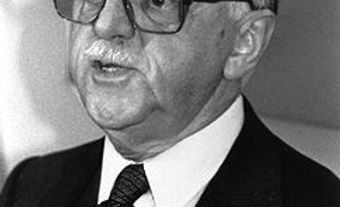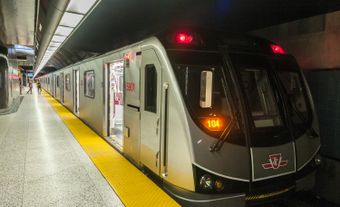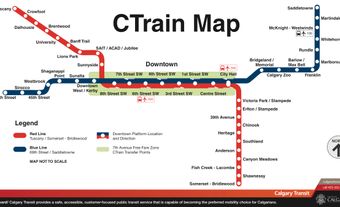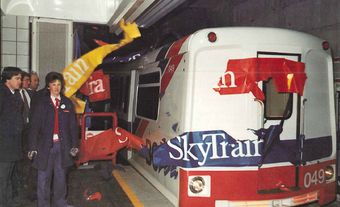The Montreal metro opened on 14 October 1966. The second Canadian subway system after Toronto’s, which opened in 1954, the Montreal metro was the first subway in North America to run on rubber tires instead of metal wheels. Extensions to the Montreal metro were built on Montreal Island over the two decades after it opened, and then to the city of Laval, on the island of Île Jésus, during the 2000s. The system runs entirely underground, and each station has a distinct architecture and design. The Montreal metro consists of four lines running a total of 71 km and serving 68 stations. In 2018, its passengers made more than 383 million trips.
Early Proposals
The Montreal Subway Company presented the first known proposal for a subway in Montreal in 1902. At that time, several subway systems were opening in the United States and Europe. From then through the end of the 1920s, Montreal’s city government received about 15 more proposals for a municipal subway system. The reason for so much interest was the potential for profit. Montreal’s population and its economy were growing steadily, and public transportation was a service that the city contracted out to private firms. The rationales offered at the time for building a subway system included the seriousness of Montreal’s traffic problems. Aggravating these problems were the city’s location on an island and the way that Mount Royal obstructed traffic flow.
Despite all these factors, none of the early proposals came to fruition. In part, the outbreak of the First World War impeded major infrastructure projects in Montreal. Another reason was the bad state of the city’s finances, which led to its being placed under the trusteeship of Quebec’s provincial government from 1918 to 1921. But in general, the Montreal authorities simply did not seem very convinced about the need for a subway and so refused to approve it.
In the late 1920s, the stars finally aligned when the premier of Quebec, Louis-Alexandre Taschereau, approved plans for a subway. But the momentum was then broken again, by the Great Depression of the 1930s. Though subway construction would have provided many jobs, neither the city nor the provincial or federal governments chose to fund it. One reason they passed on it was Montreal’s rising unemployment, which had reduced the city’s traffic problems considerably.
Nevertheless, calls to build a Montreal subway continued. In 1939, proponents thought they were nearing their goal at last. On the eve of a provincial election and despite the city’s bad finances, Montreal mayor Camillien Houde asked the provincial government to amend the city’s charter to give him the power to build a subway system. But nothing came of his request, because the Second World War broke out that same year. The city was again placed under provincial trusteeship from 1940 to 1944.
Debate Continues, 1945–60
Once the war ended in 1945, the debate over building a subway resumed. It continued throughout the 1950s, fuelled by several new reports, including one from the Commission de transport de Montréal (Montreal Transit Commission). The commission formed in 1950 when mass transit, formerly operated by a private firm, came under the control of the city government.
The main argument for subway construction was still the need to ease the city’s traffic problems. These problems were worsening with the rapid increase in the number of cars on the road. Accompanying this increase was a decline in public transit ridership, from 398.3 million in 1947 to 284.5 million in 1960. Proponents also argued that the metro would stimulate urban development both in downtown Montreal and in the other parts of the city that it served. Rivalry with Toronto became another factor. When the 1940s began, Montrealers saw a metro as a piece of infrastructure that would be only natural for their city, Canada’s largest. But Toronto grew rapidly, and it began construction of a subway in the summer of 1949. Montrealers gradually began to see a metro as essential if their city was to keep its status as a great Canadian city.
Many other citizens and elected officials staunchly opposed metro construction, however. Opponents argued that the age of mass transportation had ended and the age of the automobile was here. Cars symbolized modernity and freedom — the transportation mode of the future. This perception, which Mayor Jean Drapeau initially shared, led to the total replacement of streetcars with buses in Montreal over the years 1951 to 1959. Opponents of the Montreal metro also viewed it as a form of transportation that was too costly and inefficient. They even saw it as unhealthy, because passengers rode from place to place underground, far from the sunlight and fresh air.
Jean Drapeau Changes His Mind
The debate over a Montreal metro changed rapidly in the fall of 1960. Jean Drapeau became mayor again after three years out of office. His Civic Party secured a majority on the city council and with it greater freedom of action. In private, Drapeau was lukewarm to the idea of building a subway. But Lucien Saulnier, his new right-hand man and chair of the city’s Executive Committee, was an ardent champion of the project. Saulnier tried to convince Drapeau to go ahead with it.
In November 1960, on a visit to Paris, Saulnier took Drapeau to see one of the city’s metro lines. This line had recently begun using a new technology: cars that ran on rubber tires instead of the traditional steel wheels on rails. This technology was not yet in use in North America. Discovering it dramatically changed Drapeau’s views. Now, instead of seeing the metro as an obsolete mode of transport, he saw it as a potential symbol of innovation for Montreal. It fit with his vision to establish Montreal as a modern, world-class city. Mayor Drapeau thus came home to Quebec determined to build a subway that would run on rubber tires.
In January 1961, the Quebec provincial government of Jean Lesage gave the City of Montreal the power to build a subway. The city had complete control over the project and was completely responsible for the bill, which came to $213.7 million in the end. The cities of Longueuil and Westmount agreed to help pay the cost once two metro stations (Longueuil and Atwater) had been planned within their city limits.
Planning and Building the Montreal Metro
In April 1961, the Montreal Metro Committee formed. It was chaired by Mayor Drapeau and included members of the city’s Executive Committee. Staff from city departments including Urban Planning, Public Works, Traffic, Roads, and Finance also joined. The committee worked into the fall to define the characteristics of the project. They chose the type of wheels, the design of the cars and the routes of the lines. On 20 October 1961, Jean Drapeau and Lucien Saulnier unveiled the selected routes to the public.
The plan called for three lines. A north-south line would run east of Mount Royal (today’s Orange Line). An east-west line would run through the downtown (today’s Green Line). The final line would connect the downtown to the northern part of the city via an existing Canadian National railway tunnel running under the mountain. City officials wanted to use the metro to foster urban development while protecting certain major arteries from the inconveniences that construction would cause. Thus, for example, the city decided that the east-west line would run not underneath Sainte-Catherine Street, a major downtown artery. It would instead run underneath De Maisonneuve Boulevard, then under construction just north of Sainte-Catherine.
On 23 May 1962, metro construction began. The Bureau du métro, a municipal body headed by senior engineer Lucien L’Allier, supervised the project. Some major adjustments were made to the routes in June 1963. The line that was supposed to serve the northern part of the city via the tunnel under Mount Royal was cancelled. Technical difficulties were part of the problem. Also, Montreal could not reach an agreement with the other municipalities through which this line would have passed (Outremont, Mount Royal and Saint-Laurent). But the city authorities also announced a new line (today’s Yellow Line) connecting downtown Montreal to the South Shore of the St. Lawrence River and the site of Expo 67.
First Passengers on the Montreal Metro
After four years of construction, the Montreal metro opened on 14 October 1966. The Yellow Line and four stations on the two other lines (Frontenac, Beaudry, Square-Victoria and Bonaventure) were not yet ready. They would welcome their first passengers over the coming months, in time for Expo 67. Management of the metro went to the Commission de transport de Montréal. The system initially comprised 26 stations along three lines running a total of 22 km, entirely underground. The stations were named after nearby streets and squares.
The novelty of the metro and the opening of Expo 67 helped to increase public transit ridership in Montreal rapidly. Ridership rose from 268.7 million passengers in 1965 to 300 million in 1967. By the end of 1966, when the metro had been open for only 2.5 months, riders had already made 32.1 million trips on the system. But the lure of the automobile remained strong: the number of public transit passengers in 1969 was lower than in 1966. Many public transit officials believed that the best way to draw more riders to the metro would be to extend its lines further throughout the city.
Extensions
Extensions to the metro had been discussed during the planning of the original system. Progress toward actually building the extensions began in earnest in 1969. This happened because the Quebec provincial government of Jean-Jacques Bertrand agreed to cover part of the cost. In 1970, the City of Montreal transferred responsibility for the Bureau du Métro to the Montreal Urban Community. This was a new governance structure for the Montreal metropolitan area, chaired by Lucien Saulnier. Now known as the Bureau de Transport Métropolitain, it was tasked with planning the new extensions. In September 1970, the Bureau made its recommendations. It proposed extending the Green and Orange lines and building new north-south and east-west lines.
The Montréal Urban Community and the provincial government approved these recommendations. Work on the extensions began on 14 October 1971, five years to the day after the metro first opened. The conviction that the metro would serve as a lever for urban development again influenced the selection of routes. In particular, planners hoped it would revitalize depressed areas such as Ville-Émard and Pointe-Saint-Charles.

However, major construction delays ensued. The planned routes had to be revised. For one, the project met with technical difficulties. The second factor was citizen opposition to the demolition of housing and the loss of green space at various locations. Delays, changes , the addition of more segments to the planned extensions, and inflation drove costs up from $430 million in 1972 to $1.6 billion in 1975. Deeply concerned, the provincial government — the primary funder of the project — stopped the work in May 1976.
Nevertheless, the new eastern segment of the Green Line, serving the Olympic Park, started running in June 1976, in time for the Montreal Olympics in July. The other new segments came into service in stages. The western extension of the Green Line opened in 1978. The new Blue Line, 9.7 km long and comprising 12 stations, was completed in 1988. (With a history of start-and-stop construction, the Blue Line had taken 14 years in all to build.) From 2002 to 2007, the Orange Line was extended to the city of Laval, on the island of Île Jésus.
The Société de transport de Montréal, the city’s transit agency, plans to open an extension of the Blue Line in 2026. From Saint-Michel Station, 5.8 km of new tunnel will serve five new stations.
Art in the Montreal Metro
When the Montreal metro system was built in the early 1960s, planners ensured that every station had its own unique architecture and design. Each station would also display works by Quebec artists from various disciplines. These artists included Frédéric Back, Jordi Bonet, Charles Daudelin, Marcelle Ferron, Mario Merola and Jean-Paul Mousseau. In part, the reason was to make the Montreal metro different from the Toronto subway and other North American subways. The authorities also wanted to build a system that would draw Montrealers at a time when many of them were choosing their cars over public transit.
The first works of art chosen for the stations reflected various aspects of Montreal’s history. The choices of the metro’s first art director, Robert LaPalme, in particular, focused on this theme. These artworks touched on subjects such as the city’s founding, its industrialization and its musical past. The range of subjects expanded when it came time to plan the metro’s extensions. Committees incorporated art planning early in the station design process. The art budget for the new stations amounted to 1 per cent of total construction costs.
This distinctive aspect of Montreal’s subway system has since inspired cities such as Washington, DC, to follow suit. Montreal applied these same principles in designing the three new stations that opened on the Orange Line in 2007.
Current System
Today, the Montreal metro consists of four lines running a total of 71 km and serving 68 stations. In 2018, its passengers made more than 383 million trips.
A new generation of rubber-tired AZUR subway cars was gradually introduced starting in 2016. The ability for passengers to move freely between the cars increased the trains’ capacity by 8 per cent. The new cars are also more accessible.

 Share on Facebook
Share on Facebook Share on X
Share on X Share by Email
Share by Email Share on Google Classroom
Share on Google Classroom




































